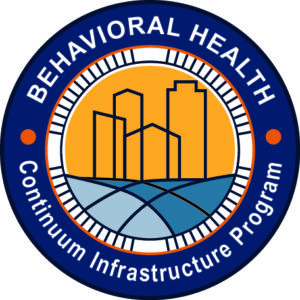Is an intermediate care facility/developmentally disabled habilitative eligible for Round 4 funding?
No. The eligible facility types are adolescent residential facilities for youth with SUD, children’s crisis residential program, community mental health clinic, community treatment facility, community wellness/youth prevention center, crisis stabilization unit, outpatient treatment for SUD, partial hospitalization program, perinatal residential SUD facility, psychiatric acute care hospital, psychiatric health facility, school-linked health center, and short-term residential […]
Do I need to have a contract in place with the county to offer Medi-Cal services in order to apply for Round 4?
A contract with the county to offer Medi-Cal services is not needed in order to apply for Round 4. However, applicants that offer Medi-Cal behavioral health services will be expected to have a contract in place with their county once the funded facility’s expansion is complete. Additionally, although community wellness centers and youth behavioral health […]
Is county approval required for application to Round 4?
No. County approval is NOT needed to apply for Round 4; however, a letter of support by any of the following entities is required: county board of supervisors, county behavioral health director, county executive, tribal council resolution, stakeholders, and/or other community-based organizations. City, nonprofit, or for-profit organizations must include a letter of support from their […]
Can a county with two behavioral health divisions apply to Round 4 Children and Youth for two separate, distinct infrastructure projects, or would they need to apply jointly?
A county with two behavioral health divisions may apply separately for distinct infrastructure projects specific for the children and youth population. However, if services being rendered are at the same location, then one application will be necessary.
Why are school-based health centers not eligible for Round 4, even though school-linked health centers are? School-linked health centers are a type of school-based health center.
The difference for purposes of determining eligibility is the facility’s location. Unlike school-based health centers, which are located on school property, school-linked health centers are located off school property.
The Round 4 RFA states that schools are not eligible for Round 4, yet one of the facility types listed is school-linked health center. Can you explain what a school-linked health center is?
A school-linked health center is a specific type of school-based health center that is located off campus and has a formal operating agreement with the partnering school. School-linked health centers are operated by a community health center, a federally qualified health center, or other community-based provider and offers a wide variety of services such as […]
Would an adult residential facility for SUD treatment that serves 18- to 25-year-olds qualify for BHCIP Round 4 funding?
No. Adult SUD residential facilities are not an eligible facility type.
Can these funds be used to build professional parent housing for intensive services and therapeutic foster care?
No. the facilities to be funded in BHCIP Round 4: Children and Youth are listed in the Program Update.
Our facility provides substance use disorder treatment for all ages, with a large percentage of 18- to 24-year-olds. Are we eligible to apply for BHCIP Round 4 funding?
Yes. BHCIP Round 4 will only fund facility expansion projects for youth age 25 and younger. The application must clearly explain how the infrastructure project will expand services for youth age 25 and younger exclusively.
Will there be funding for pre-development activities, such as feasibility studies, environmental impact studies, and engineering plans?
Funding for pre-development activities is included in the overall budget for the proposed project. Pre-development activities may include but are not limited to funds to hire an architect to draw construction plans, working with a financial advisor to develop a business plan, and other activities required to reach the minimum threshold for project readiness.
